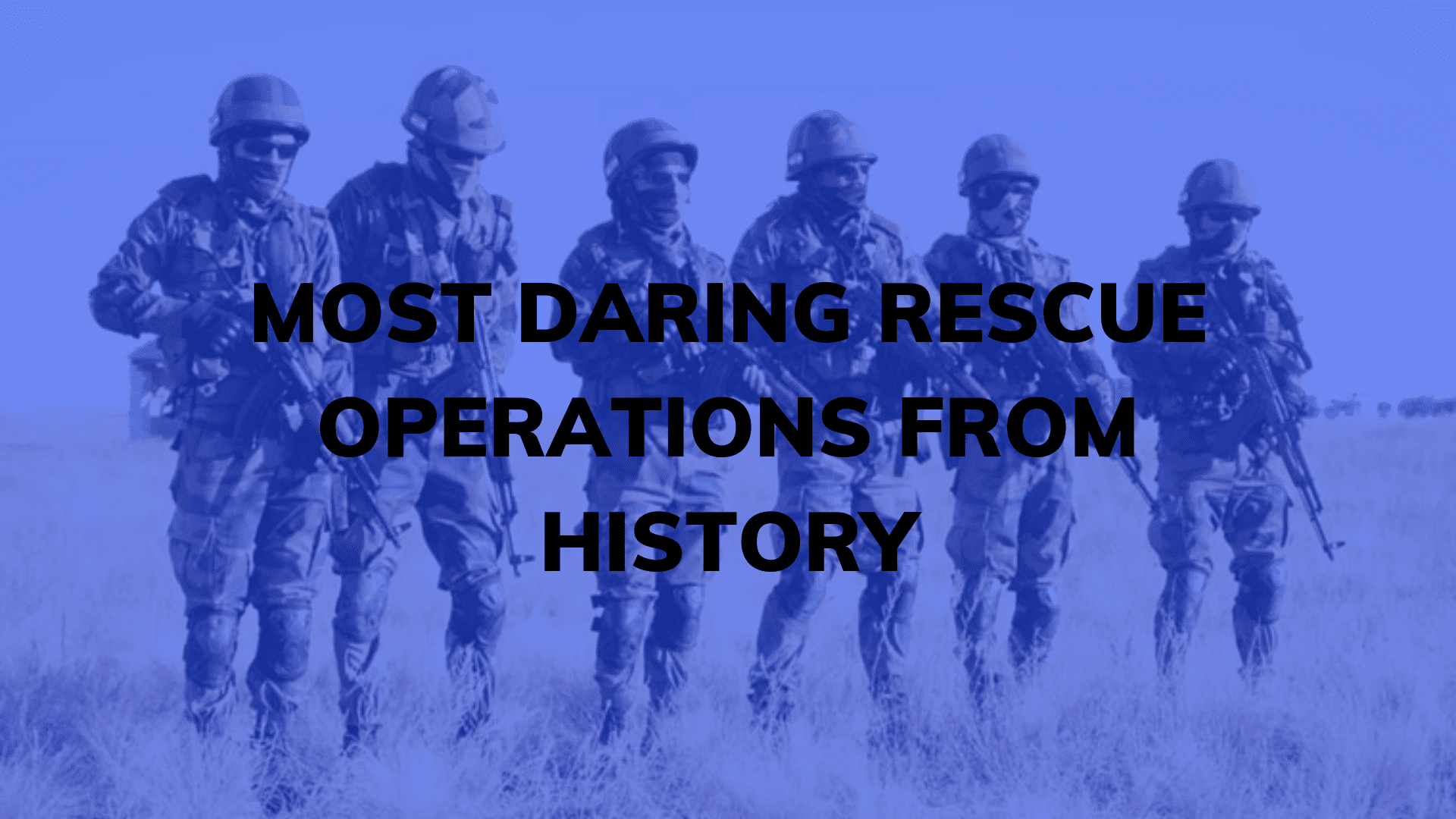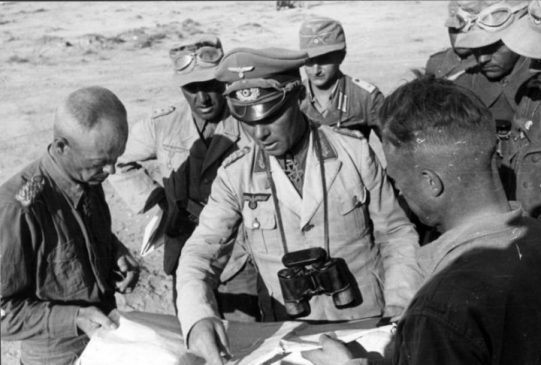Danger, suspense, adventure and a successful ending (hopefully) are what good rescue stories and movies are made of. Many a time these stories are inspired by real life events. And these real life events are far more awe inspiring than any story written as a mere figment of the writer’s imagination.
While some rescues require extensive planning, some of them are on the spur of the moment, relying on luck and outstanding courage rather than on meticulous preparation. Over the years men and women, have gone an extra mile to rescue friends, loved ones and even complete strangers from danger. It may just have been part of the rescuer’s job or even civilians stepping in to display outstanding acts of humanity
Explained below are seven of the most daring rescue missions conducted around the world. Read on to find out how courage and valor stood their ground in the face of grave danger bearing in mind only the ultimate goal.
Raid at Cabanatuan

Also known as The Great Raid, involved rescue of Allied prisoners of war and civilians from a Japanese camp, near Cabanatuan city in the Philippines. Carried out in January of 1945, by the US Army it is till date considered one of the most daring and courageous operations in the history of warfare. The mission was a huge success.
The Battle of Bataan was a huge defeat for the Americans and their allies. Thereafter the Imperial Japanese Army took hundreds of thousands of prisoners. These prisoners were then led to the Cabanatuan camp in what was known as the Bataan Death March under extremely hostile conditions. Though from there several of the prisoners were moved to other places, about 500 people were still held there as prisoners.
Disease, malnourishment, cruelty at the hands of the captors and fear of execution made the conditions of the camp nightmarish. However the Sixth Army from the US with the help of a small number of Filipino guerrillas hatched a plan to rescue the prisoners. On the night of January 30th, 1945, the rescue team reached the camp under the cover of darkness. Using a
Special P-61 black widow night fighter plane as a distraction, caught the Japanese soldiers by complete surprise. In the brief 30 minute co-ordinated attack several Japanese soldiers but only 4 Americans were killed. All but 2 of the prisoners made it back across to the American lines.
Operation Flipper
Operation Flipper also called the Rommel Raid, was a British commando raid during the second World War. On the eve of a major offensive in North Africa, against the German African Corps, the British Generals planned a daring operation to attack and kill or capture, the legendary Desert Fox, General Irwin Rommel.
Leading the mission was Col Robert Laycock, with his second in command being Lt Col Geoffrey Keyes. A team of 60 soldiers from #11 Scottish commando and special boat service were to make their way ashore on the coast of Libya. Little did they know that the mission was a disaster from the beginning.
A squall struck just as the men prepared to disembark on reaching the destination. As a result, the rescue team was reduced to nearly half. It was then decided that the surviving members would be split into groups to achieve the various objectives they had set out to achieve.
On November 17th, the various groups reached their respective launch positions. One team led by Keyes, reached Gen Rommel’s headquarters but were soon discovered by German guards and staff. The commando leader was shot and eventually died on the scene. What was worse was that Gen Rommel was not present at the headquarters. Inclement weather had delayed his arrival from Rome.
The operation ended in total failure wherein only 2 of the commandos and one of the SBS operators made it home alive. However Operation Flipper is seen as a bold and complex operation which involved covert insertion from a submarine, an arduous trek across miles of desert area and whose death or capture could have altered the direction of World War II
Gerard Kuiper Saves Max Planck

A rescue mission doesn’t necessarily involve high speed car chases or jumping from airplanes. One such understated quiet mission is the mission wherein the German scientist known as the father of quantum theory, Max Planck was rescued by an astronomer turned soldier Gerard Kuiper, also known as the father of modern planetary astronomy.
Planck was an extremely respected scientist admired both by the Germans, as a leader and spokesman for German physics as well as by the Allies as someone who never embraced the Nazis. It had come to the notice of Gerard Kuiper that Max Planck and his wife, Marga were stranded in East Germany at the end of World War II. The situation was extremely grim since the Red Army was marching swiftly in their direction. The Soviet Army’s cruelty was evident in the raping, looting and killing they indulged in.
Gerard Kuiper understanding the time constraint convinced 2 GIs to accompany him on the rescue mission. Intelligence reports had shown that Max Planck and his wife were at that time hiding on a farm a few miles east of the Elbe river but in bad shape. The point to be noted here is that General Dwight Eisenhower had issued orders that the Elbe river would be the limit of advance of the American army into Germany. Which meant that the Russian soldiers were just about 100 miles away, making the mission very risky.
Kuiper made it to the farm by the River Elbe where Max Planck and his wife were hiding. There the Plancks did not require much persuasion to jump on to Kuiper’s jeep and head west.
The jeep dashed back towards the Elbe narrowly escaping an encounter with the Russian soldiers. Max Planck was then taken to a hospital where he recovered over a few weeks. Subsequent to his recovery, Max Planck opted to remain in Germany and continue his work whereas Gerard Kuiper returned to the US.
Operation Wrath of God
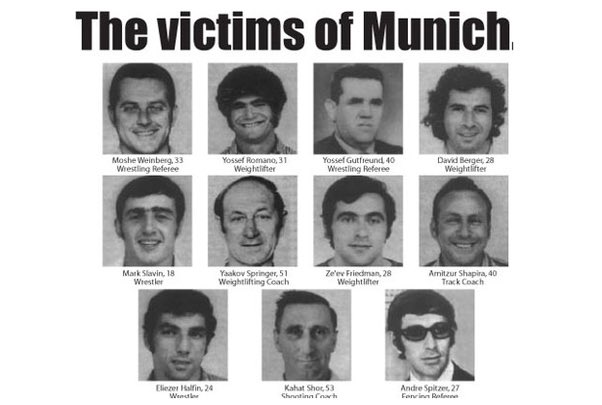
This operation was also referred to as Operation Bayonet. This operation was undertaken by the Mossad, to avenge the kidnapping and murder of 11 Israeli athletes by Palestinian militants in September 1972 at the Munich Olympics. The targets were the Palestinian militant group by the name of Black September and operatives of the Palestine Liberation Organization. The wrath of God hit squad code named bayonets comprised of members of Mossad, Israel’s foreign intelligence agency and supported by special operations teams from Israel Defence Forces. The secret committee was chaired by Israeli Prime Minister Golda Meir and Foreign Minister Moshe Dayan and was believed to have continued for several years.
The first target was Wael Zwaiter, a PLO organiser who was shot down in the lobby of his Rome apartment building in October 1972. Mahmoud Hamshari, the PLO representative at Paris was the next target. Wrath of God explosives experts broke into his apartment and planted a bomb in his telephone after another Wrath of God member posed as an Italian journalist and scheduled an interview with him. In December 1972, Hamshari was called at a pre designated time for the interview, when the bomb exploded on him answering the call.
Basil-al-Kubaisi, Hussain Abad al-chir, Zaid Muchassi and Mohammed Boudia were killed over the next few months. This was followed by the killing of Muhammad Youssef Al-Najjar, Kamal Adwan and Kamal Nasser in an attack of the PFLP Headquarters
Ali Hassan Salameh, a Fatah and Black September operations chief also known as Red Prince was the final target of the mission in 1979. The squad placed a car bomb along a route that Ali Hassan frequented and subsequently killed him.
Operation Nimrod
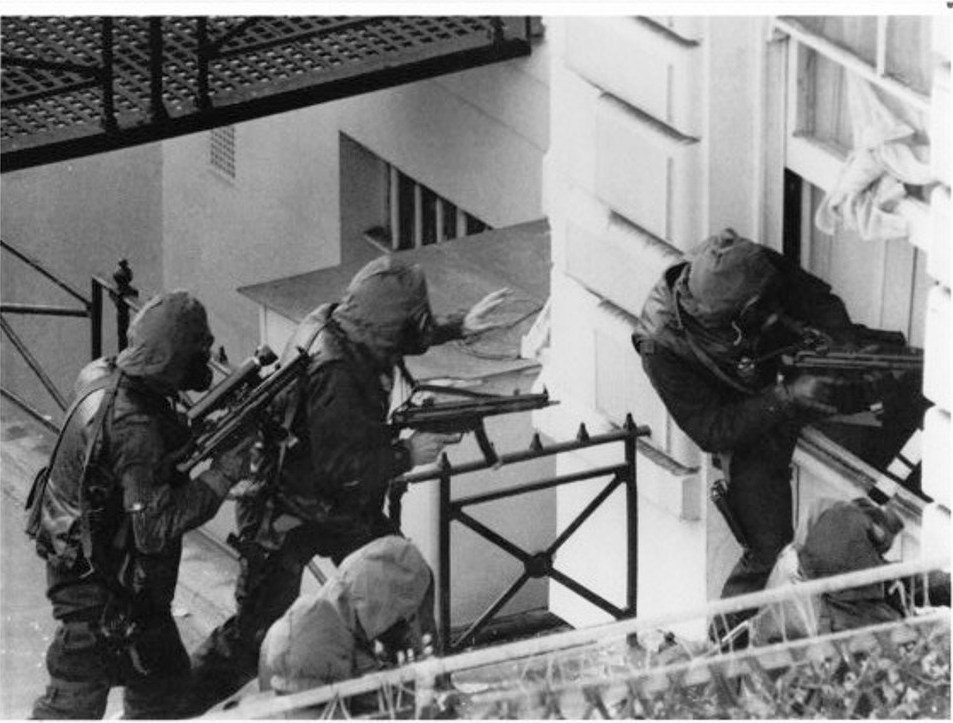
This rescue operation refers to the siege of the Iranian Embassy that took place from 30th April to 5th May 1980 in London. A group of 6 armed men, Arabs from the DRFLA group, stormed the Iranian Embassy on Prince’s Gate at South Kensington, London, taking 26 people hostage. The hostages comprised mainly of Embassy staff, several visitors and a single policeman who was guarding the Embassy.
By the sixth day of the siege the gunmen became increasingly frustrated that the negotiations were making no headway. That evening they killed one of the hostages and threw his body out of the window. As a result the Government ordered the SAS to conduct an assault nicknamed Operation Nimrod, to rescue the remaining hostages. Almost 30 operatives took part in the assault.
It was then that one of the most public commando raids in history took place in front of hundreds of television cameras and reporters who broadcast the rescue live. The SAS soldiers abseiled from the roof of the building and forced entry through the windows of the ground floor.
During the 17 minute raid, the SAS personnel rescued all but one of the hostages who was killed in the crossfire and killed 5 of the hostage seekers. The remaining terrorist escaped with the hostages but was discovered by one SAS officer, convicted and served a 27 year jail sentence.
Moscow Theatre Rescue

The Moscow Theatre hostage crisis is also dubbed as the 2002 Nord-Ost siege. The seizure of the crowded Dubrovka Theatre by 40-50 armed Chechens on 23 October 2002 involved 850 hostages ending with the death of 170 people formed the event. It has been ruled as one of the boldest terrorist hostage takings in history where the hostages were held captive for nearly a week.
The attackers were led by Movsar Barayev, claimed allegiance to the Islamist separatist movement in Chechnya. They demanded the withdrawal of Russian forces from Chechnya and an end to the Second Chechen War. Upto 40 Chechen terrorists including female suicide bombers strapped with explosives and detonators entered the theatre held the hostages for days. Two female hostages were killed after negotiations broke down and the Russian Government soon put together the elite Alpha Group of the Federations Spetznatz to ensure the release of the hostages.
Due to the layout of the theatre, the rescuers would have to fight through 100 ft of corridor space and attack a well defended staircase in order to reach the hall where the hostages were held. Numerous and most powerful explosives were concentrated at the centre in the auditorium.
On October 26, 2002, the Spetznatz used a specialised gas and pumped it through the air ducts of the theatre to knock out all the people in the theatre. They then entered guns blazing.
The commandos shot nearly 40 terrorists dead and captured several more. While most of the hostages were rescued, nearly 204 of them died due to poisoning by the gas. Several of the commandos too suffered from widespread exposure to the gas. The raid was aggressive, cunning and the first known commando assault to use a still unknown gas to suppress the target before the assault.
Operation Thunderbolt
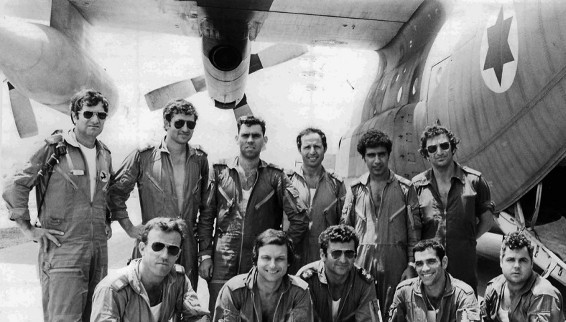
Also known as Operation Entebbe was one of the most iconic hostage rescue operations. It was an audacious operation to say the least since the odds were stacked against the rescuers.
The mission went on to rescue over a hundred hostages.
On June 27, 1976, an Air France flight out of Tel Aviv bound for Paris was hijacked by 4 terrorists including 2 West German revolutionaries and 2 members from the Popular Front for the Liberation of Palestine (PLO). Scheduled to fly from Tel Aviv to Paris, after a brief stop in Athens and Tripoli, it eventually landed at Entebbe airport in Uganda. The terrorists demanded $5 million and the release of 40 Israeli held Palestinian militants failing which the Israeli passengers on board would be executed.
First however all non Israeli passengers were freed, after which 94 passengers remained along with 12 Air France crew. The issue was compounded by the fact that the plane was stationed in Uganda, whose leader Idi Amin had expressed support to the terrorists. This meant that the rescue mission would be conducted on foreign soil in a hostile environment.
When negotiations broke down, the Israeli military started planning a rescue, which involved almost 100 men including 29 assaulter from the legendary Sayeret Matkal. The assault team was lead by Lt Col Yonathan Netanyahu. The commandos landed at Entebbe under the cover of darkness. They then travelled to the terminal in a black Mercedes and two black Land Rovers so that it resembled Idi Amin’s motorcade and hoped that the guards could be taken unawares.
The entire operation took a week of planning and about 90 minutes for execution. Netanyahu had ordered the sentries to be killed but they were only injured and as a result one of them was able to raise an alarm. In the meanwhile however the rescuers ditched their vehicles and swiftly proceeded on foot towards the terminal building. There during a fight which ensued, three Israeli passengers were killed and so were all the hijackers. The rescue team managed to destroy most of the Ugandan Air Force and engage the Ugandan troops till the hostages escaped to Israel on board Hercules transport planes.
In all 102 hostages were rescued, five commandos were injured but only Netanyahu was killed during the encounter. Operation Thunderbolt is even today known as a legendary rescue operation and is sometimes retroactively called Operation Jonathan in memory of the leader who lost his life in the rescue mission.

